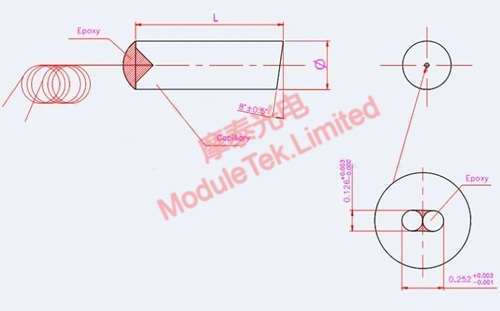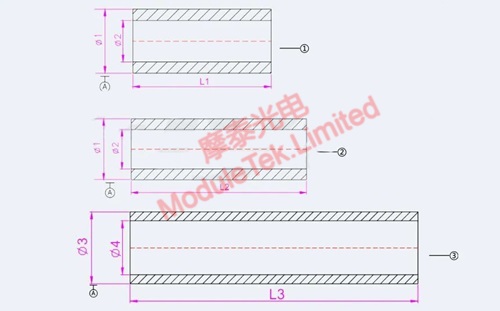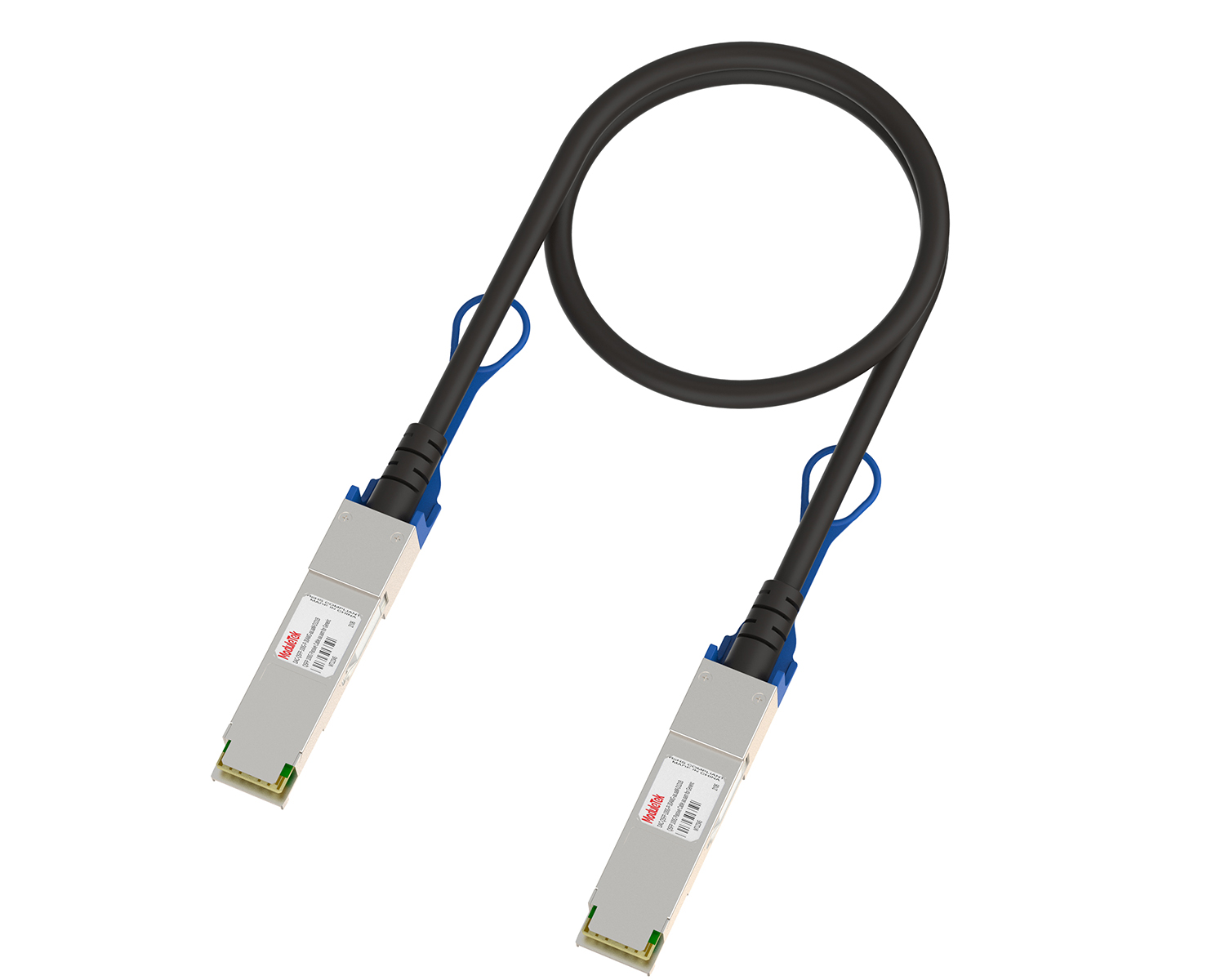TFF WDM Passive components composition structure
Time: 2023-12-01
Filter Wavelength Division Multiplexing, or Filter WDM for short, is also known as TFF-type three-port WDM device because it is composed of thin-film filter (TFF), which is mainly composed of the following parts: on the left side are single-fiber collimator and C-Lens, which are fixed together by dispensing glue and then connected and fixed with glass tube, on the right side are wave plate, G-Lens, dual-fiber collimator in turn, jacket and single-fiber collimator after dispensing glue and fixed with glass tube. Lens, glued together and fixed with a glass tube connection, the right side is the wave plate, G-Lens, bifilar collimator sequentially glued and fixed, the jacket and the single-fiber collimator side of the same size of the outer diameter of the glass tube, and finally use a large glass tube to connect the left and right sides, and ultimately the formation of the standard three-port device, as shown in Figure 1 (shaded portion is the glue).

Figure 1 Filter Wavelength Division Multiplexing
The composition is explained in detail:
① C-Lens: Conventional Lens
C-Lens is a fixed refractive index of the column thick lens, the principle of transmission is the same as the conventional lens, the refractive index of each part of the lens is the same, but the C-lens in the material and the conventional lens is different, it uses a fiber-optic communication band with a high refractive index of the material, this material has good resistance to acid and alkali corrosion, and its One end face is spherical, the other end face is beveled, in the case of C-lens two end faces coated with permeation enhancement film, it has a very high transmittance rate of fiber optic communication bands, up to 99.9% or more, and the mechanical dimensions of the C-LENS are shown in Figure 2.

Figure 2 Conventional Lens
②G-Lens: Gradient-index Lens
G-Lens is a self-focusing lens, also known as gradient-index lens, which is the biggest difference from the ordinary lens C-Lens is that its refractive index is the center of the lens axially outside the radial direction gradually decreasing, can make the light transmitted along the axial direction of continuous refraction, so as to realize the outgoing light smoothly and continuously converge to a point, G-LENS mechanical dimensions are shown in Figure 3. The dimensions are shown in Figure 3.

Figure 3 Gradient-index Lens
③Dual fiber Pigtai
As a light input / output carrier, play a role in protecting the optical fiber, in the oblique 8 ° surface plating permeability enhancement film is more conducive to fiber optic transmission, in the TFF WDM device, one of the optical fiber as the input COM, the other end of the output as Reflect, oblique 8 ° surface and then coupled with the oblique 8 ° surface of the G-Lens, the light from the COM into the light after the other end of the G-Lens perpendicular to the light in the G-Lens. -Lens at the other end of the perpendicular to the optical axis of the surface focus, and ultimately according to the two sides of the film on the coating system of the specific band, reflection and transmission of the two segments of the irrelevant band, in which the reflected wave from the dual-fiber pigtail's output Reflect ejected, Dual fiber Pigtail mechanical dimensions are shown in Figure 4.

Figure 4 Dual fiber Pigtai
④Single fiber Pigtail
As the input/output carrier of light, it plays the role of protecting the fiber, coupled with C-Lens, receives the band transmitted from the input end of the Dual fiber Pigtail COM through the filter, and the output end is Pass, and the mechanical dimensions of the Single fiber Pigtail are shown in Figure 5.

Figure 5 Single fiber Pigtail
⑤Glass Tube
Mainly plays the role of fixing and connecting to protect the stability of the internal optical path, in which the glass tube ① is shorter, used for dual-fiber collimator parts, play the role of sealing the drum, to ensure that the same size with the outside diameter of single-fiber collimator; Glass Tube ② to play a role in fixing the role of single-fiber pigtail, wrapped with C-Lens and single-fiber collimator spotting; Glass Tube ③ protection and connectivity The glass tube (③) protects and connects the single and double fiber ends to ensure the stability and reliability of the optical path, and the mechanical dimensions of the glass tube are shown in Figure 6.

Figure 6 Glass Tube
⑥Filter
Conventional size are 1.4 * 1.4 * 1.0mm rectangular crystal, from the glass substrate, and then dozens of layers of different materials, different refractive indices and different thicknesses of the combination of dielectric film.The periodic structure composed of high/low refractive index dielectric film results in a pass band for a certain wavelength range and a block band for another wavelength range, forming the required filtering characteristics. Its function is similar to part of the reflective film, the cavity layer in the middle of the two mirrors will be separated; and in the glass substrate on the other side will also be coated with a layer of transmittance enhancement film to increase the wavelength transmittance, positive and negative surface of the coating can be distinguished with the naked eye, generally the reflective side of the darker color, as shown in Figure 7.

Figure 7 Filter
Moduletek Limited can provide TFF WDM passive wavelength division products, welcome to buy !
If you have any questions about the above content, you can contact us by Email : web@moduletek.com

 40G/100G Optical Transceivers
40G/100G Optical Transceivers 10G/25G Optical Transceivers
10G/25G Optical Transceivers 155M/622M/2.5G Optical Transceivers
155M/622M/2.5G Optical Transceivers 100M/1G Optical Transceivers
100M/1G Optical Transceivers FC 16G/32G Optical Transceivers
FC 16G/32G Optical Transceivers CWDM/DWDM Optical Transceivers
CWDM/DWDM Optical Transceivers 100M/1G/10G Coppers
100M/1G/10G Coppers Active Cable AOC
Active Cable AOC Direct Attach Cable DAC
Direct Attach Cable DAC Regular/MTP-MPO Fiber Patch Cords
Regular/MTP-MPO Fiber Patch Cords MT2011
MT2011 MT2010
MT2010 CodingBox
CodingBox






